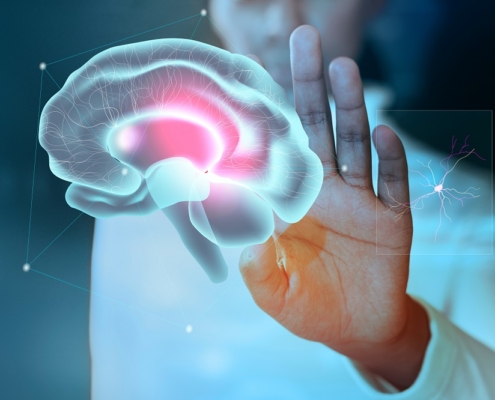Headaches are one of the most common complaints in society. The percentage of people who experience a headache at least once in their lifetime is 93% in men and 99% in women, and over 90% in general papulation. The causes of this complaint, which is defined very frequently, are examined under two main headings. These are; primary headaches and secondary headaches. Such a distinction has great benefits in terms of clinical practice, beyond determining the characteristics of headaches. Because if the patient’s complaints are considered as one of the “primary headaches”, it is understood that the headache itself is a disease and does not threaten life, that advanced examinations are generally not required for diagnosis, and that it is a headache that can mostly be controlled with treatment and recommendations. However, if it is considered as one of the “secondary headaches”, it is understood that the headache is a symptom, there is another underlying disease, it can be life-threatening, therefore urgent action should be taken and advanced examinations should be made and treatment should be started as soon as possible.
Tension-type headache
Tension headache is the most common headache among all primary headaches. It is also the most common neurological disease worldwide. In a Danish study, the incidence of frequent episodic tension headache and chronic tension headache was found to be 14.2 per 1000 people. The incidence is 2.6 times higher in women than in men. The lifetime prevalence varies between 44-86%. In addition to being female, risk factors include low education level, insufficient sleep, physical and mental fatigue and depression. It comes after migraine in the order of seeking medical help. The reason for this is that patients with tension headaches feel less need to seek medical help. Any secondary headache may meet the diagnostic criteria for tension headache. The location of tension headache is variable. Patients often complain of a pain that wraps around the entire head as if there were a tight band. However, the pain may also be felt in the forehead, back of the head or neck. The headache is usually bilateral and is usually of a non-throbbing type, compressive, pressing nature. In most patients, the headache is moderate and does not go away, and it is rarely aggravated by daily physical activities. Tension headache is not expected to be accompanied by symptoms such as light discomfort, nausea and/or vomiting. These reasons are referred to as “asymptomatic headache”. There may be patients who say that they are bothered by sound during the headache. Tension headache occurring less than 15 days per month is considered episodic, while tension headache occurring 15 or more days per month and continuing for at least 3 months is considered chronic. In some patients diagnosed with episodic tension headache, aura-free migraine may be valid, while in some patients diagnosed with chronic tension headache, chronic migraine may be valid. Palpation technique is used to determine pericranial muscle sensitivity, which is important in determining subcategories. Treatment is divided into drug, non-drug and interventional treatment.
Preventive treatment;
o If it occurs more frequently than two days in the patient,
o If the headache duration is longer than 4 hours,
o If it causes limitation in daily life activities,
o If there is excessive use of attack treatment drugs,
o If there is sensitivity or contraindication to the drugs used in the attack, it is necessary.
Tension headache, also known as nervous headache, is felt in the whole head but mostly starts from the nape of the neck, is mild, compressive/blunt, is not accompanied by nausea or vomiting, does not increase with movement, and can last much shorter than migraine pain, but can last for weeks, months and sometimes years without interruption. Tension-type headaches and migraine attacks that can be triggered by stress can often be confused. However, it is a type of pain that has a low rate of consulting a physician.
 https://drturanpoyraz.com/en/wp-content/uploads/2023/07/kafatravmasi.jpg
666
1000
drturan_pyrzawp
https://localveri.net/drturanpoyraz/wp-content/uploads/2024/07/logo2.png
drturan_pyrzawp2023-07-18 17:33:472024-08-01 16:32:02HEAD TRAUMA AND BRAIN INJURY
https://drturanpoyraz.com/en/wp-content/uploads/2023/07/kafatravmasi.jpg
666
1000
drturan_pyrzawp
https://localveri.net/drturanpoyraz/wp-content/uploads/2024/07/logo2.png
drturan_pyrzawp2023-07-18 17:33:472024-08-01 16:32:02HEAD TRAUMA AND BRAIN INJURY






